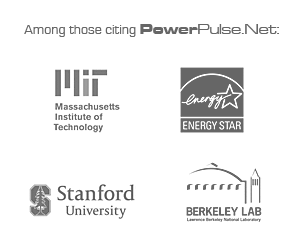New Solutions and Challenges for Digital Control of Power Converters

Advancements in semiconductor technologies and system-level performance requirements, particularly in the telecom and datacom markets, have had a tremendous impact on the board level power infrastructure. Moore’s Law has been driving device densities, with the consequential effects of driving frequencies higher and voltages lower. With as many as 20 different voltage rails on a single board, as low as 0.5V and still falling, and with load currents exceeding 100A, power has become a major challenge for the system architect. With the lower voltage requirements for today’s electronics, one might also project a reduction in the power levels.
Advancements in semiconductor technologies and system-level performance requirements, particularly in the telecom and datacom markets, have had a tremendous impact on the board level power infrastructure. Moore’s Law has been driving device densities, with the consequential effects of driving frequencies higher and voltages lower. With as many as 20 different voltage rails on a single board, as low as 0.5V and still falling, and with load currents exceeding 100A, power has become a major challenge for the system architect. With the lower voltage requirements for today’s electronics, one might also project a reduction in the power levels.
In fact we have witnessed just the opposite. In the 1990s, power density per line card board was about 300W, and is on track to reach 3kW by 2015 and 5kW by 2020. But innovations beyond semiconductor geometries are also driving demands on power performance beyond the scope of increasing density and falling voltages. Multi-rail ASICs with voltage tracking and/or sequencing requirements along with total voltage regulation limits of ±1% including ripple & noise, transient deviations & temperature effects. Operational transitions place intense demands on current slew rates. And the employments of frequency scaling and dynamic core voltage adjustment are now commonly used to manage the total power dissipation.
As a result of these and other semiconductor technologies, we are today confronted with the limitations of the analog power technologies that have dominated the power technology landscape for the past four decades. Digitally controlled power modules offer multiple advantages over analog PWM architectures. While such advantages have been understood for some time, practical realization has been delayed by size and cost constraints, but digitally controlled converters have now achieved the cost-benefit threshold that supports their broad adoption. Indeed, digital power converters have awaited a threshold driven by Moore’s Law where cost-effective silicon with sufficient performance was available. Not surprisingly, development of such converters itself relies on the very advances in device technologies for which their advanced features are needed.
Digital control offers improvements in stability and transient response, efficiency, voltage accuracy, temperature compensation, as well as power management functionality that must be layered on top of analog controlled converters. While both analog and digital converters are generally designed to provide good stability and transient response over a wide range of operating conditions, digital control provides a means to adapt to changing system requirements. Non-linear control loops and dynamic loop compensation not only deliver improved transient response, but can deliver unconditional stability.

Module and system level efficiency improvements can be achieved with innovative algorithms and proper device configuration. To assist the power system architect, the PMBus™ adds capabilities not available in analog converters such as warning thresholds, adjustable protection thresholds, and configurable responses, parallel operation without current derating, sequencing, setting of the output voltage, activation of the trim function, output enable/inhibit control, all via software command. And groups of converters can be defined such that group commands can be issued to synchronize configuration changes so as to avert issuance of alarms.
While digital control resolves multiple application issues, other concerns remain. Designers are frequently confronted with a requirement to qualify multiple sources, and must assure that alternate devices deliver comparable performance in each application. There have been two notable past efforts to provide customers with some level of compatible performance. The Point of Load Alliance (POLA) was founded on the principle that member companies would utilize a common chipset to ensure compatibility.
While this indeed addressed compatibility, it removed innovation from the equation, and the alliance ultimately failed to maintain pace with advances in power conversion. The Distributed Power Open Standards Alliance (DOSA) was established to define standard packages and pin configurations. This provided for pin compatibility and encouraged innovation, but ignored interoperability beyond the scope of the output trim equation. With digital power conversion, the issue is perhaps even more complex, as firmware compatibility now comes into play.
A new power industry consortium, the Architects of Modern Power (AMP), has been established to address these very concerns. Murata Power Solutions, Ericsson Power, and CUI have come together with the aim to create the most technically advanced, end-to-end distributed power solutions – a complete ecosystem of hardware, software, and support. The group’s work will extend well beyond defining mechanical dimensions and product footprints for intelligent power modules and supplies. A level of software compatibility will be required in order to achieve a true multi-source solution, including compatibility of PMBus™ commands, proprietary controller commands, and configuration files. The consortium’s long-term strategic alliance will foster close collaboration between members to develop shared technology roadmaps. The result will be a true multi-sourced, high efficiency power ecosystem with exceptional supply chain reliability.














